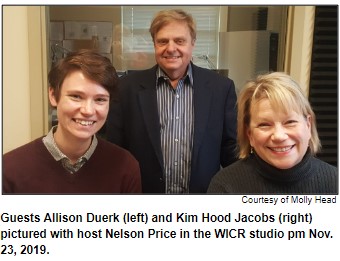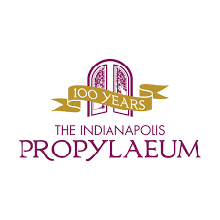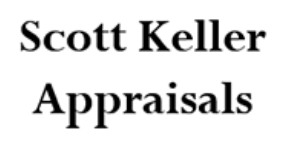A live weekly radio adventure through Indiana history with host Nelson Price. Airs live on Saturdays from noon to 1 pm ET at WICR 88.7 fm in Indianapolis.
You can listen to WICR anywhere on your mobile device or at home on your smart speaker. Go to www.wicronline.org to listen live. You can also ask your smart speaker to "play WICR" OR "play 88.7 the Diamond".
March 04, 2023
Statehouse stories, including basement secrets

With the Indiana Legislature in full swing, it's ideal timing to spotlight the Indiana State Capitol, including history stories from its top (the dome) to its bottom (the cavernous basement, which once held everything from cannon balls to bathtubs for legislators and secret staircases). We also will time travel to an era before the current Statehouse, built of limestone, opened in 1888.
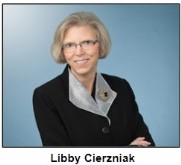 Before that, state lawmakers met in an earlier Statehouse built in 1835 that unwisely involved the extensive use of stucco on the exterior. Suffice it to say that the "stucco Statehouse" did not hold up well during Indiana winters. After the ceiling came crashing down in 1867 in the room where the House of Representatives met (fortunately, the legislature was not in session during the collapse), state leaders realized the stucco structure desperately needed to be demolished and initiated plans to construct the current State Capitol building. But there were controversies from the start with the so-called "People's House", including squabbles among prospective architects and cost-cutting moves that impacted the design of the dome, as our guest has written about.
Before that, state lawmakers met in an earlier Statehouse built in 1835 that unwisely involved the extensive use of stucco on the exterior. Suffice it to say that the "stucco Statehouse" did not hold up well during Indiana winters. After the ceiling came crashing down in 1867 in the room where the House of Representatives met (fortunately, the legislature was not in session during the collapse), state leaders realized the stucco structure desperately needed to be demolished and initiated plans to construct the current State Capitol building. But there were controversies from the start with the so-called "People's House", including squabbles among prospective architects and cost-cutting moves that impacted the design of the dome, as our guest has written about.
Our guide for Statehouse stories will be a retired lawyer and lobbyist, Libby Cierzniak, who now writes a blog about Indianapolis city history, indypolitan.com. Her most recent blog post, titled "What lies beneath: Secrets of the Statehouse basement", describes an astounding range of creepy, colorful or just plain unexpected items and uses for the subterranean level.
 Perhaps it's not shocking that a stuffed moose and mastodon bones once could be found in the basement, considering it housed the Indiana State Museum from the 1890s up through early 1960s. But cannonballs filled with gunpowder? Bathtubs for legislators and a bedroom? As Libby has documented, the Indiana State Capitol once housed the armory for the state's militia. And during the late 1800s or early 1900s, "perks" included bathtubs (for some state legislators) and, for one justice on the Indiana Supreme Court, a bedroom, or, as Libby put it, a "basement boudoir". A secret, spiral staircase in the northwest corner of the basement ended in the third floor "robing room" of the Supreme Court justices. Although the bedroom was shut down in 1920, the bricked-over entrance and remnants of the former staircase can still be seen in the basement.
Perhaps it's not shocking that a stuffed moose and mastodon bones once could be found in the basement, considering it housed the Indiana State Museum from the 1890s up through early 1960s. But cannonballs filled with gunpowder? Bathtubs for legislators and a bedroom? As Libby has documented, the Indiana State Capitol once housed the armory for the state's militia. And during the late 1800s or early 1900s, "perks" included bathtubs (for some state legislators) and, for one justice on the Indiana Supreme Court, a bedroom, or, as Libby put it, a "basement boudoir". A secret, spiral staircase in the northwest corner of the basement ended in the third floor "robing room" of the Supreme Court justices. Although the bedroom was shut down in 1920, the bricked-over entrance and remnants of the former staircase can still be seen in the basement.
To stay within the $2 million budget for the Statehouse in the 1880s, several cost-saving measures were enacted, including some that altered the original design proposed by Indianapolis-based architect Edwin May, Libby reports. Although May had won a fierce competition to design the building, Libby notes that rival architects created controversies and filed lawsuits that persisted during the long construction; May died even before the cornerstone was dedicated. According to Libby's research, items deposited in the cornerstone included 47 varieties of cereal and seed grown in Indiana.
Our guest Libby Cierzniak, who owns a range of Statehouse memorabilia, recently bought what she believes to be a set of original door knobs (adorned with the state seal) to the landmark building. She says such collectibles continue to be hot sellers at auctions. In addition to an extensive career as a lawyer and a lobbyist, Libby was a legislative staffer and a judicial clerk early in her career. The Indiana State Capitol is where, as Libby puts it, she "spent some of the most frustrating, exhilarating, exhausting and gratifying days of my professional life".
In 1988, to coincide with the 100th anniversary of the Statehouse, an extensive renovation was completed that brought much of its interior back to its original look of 1888. One difference, Libby notes, is the absence of spittoons.

 The stucco-clad Statehouse built in 1835 stood at the south end of the grounds of the current Indiana State Capitol. Noting that it had been "crumbling since the Civil War", Libby points out that it was "demolished in the late 1870s and hauled away for $250".
The stucco-clad Statehouse built in 1835 stood at the south end of the grounds of the current Indiana State Capitol. Noting that it had been "crumbling since the Civil War", Libby points out that it was "demolished in the late 1870s and hauled away for $250".
Parts of the current building's basement also were criticized as deplorable periodically after it opened in 1888. "Over time, the sheer accumulation of discarded items began to pose a risk to health and safety of the workers who toiled in the netherworld of the basement", Libby wrote. "The early 1930s were especially dangerous. In 1932, rats gnawing on matches in a trash heap were blamed for starting a fire in the north wing of the basement."
In recent years, former storage areas were cleared and converted to offices for state employees.

Your contributions help keep Hoosier History Live on the air, on the web and in your inbox!


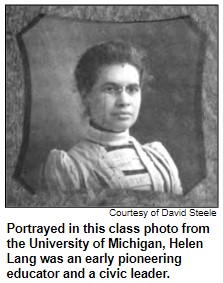 Guest Roadtripper David Steele, Indianapolis business and civic leader, tells us about an unusual marble tablet in the
Guest Roadtripper David Steele, Indianapolis business and civic leader, tells us about an unusual marble tablet in the 
